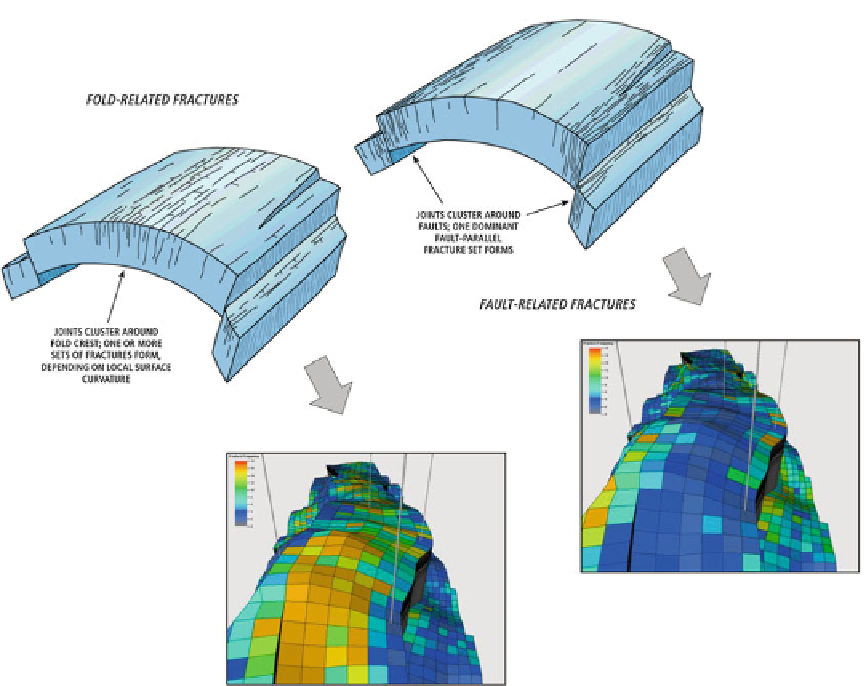Geoscience Reference
In-Depth Information
Fig. 6.61
Alternative concepts for fracture distribution (fold- or fault-related), and property models for fracture
density which honour those concepts implicitly (
hot colours
¼
higher fracture density)
modelling (in terms of effective permeabilities)
then become the inputs
flow processes dominate the fluid exchange
between the matrix block and the fracture net-
work, while viscous (Darcy) flow processes
dominate in the fracture network. Note also that
flow in fractures is governed by Poiseuille's
Given that dual-permeability mode simulation
needs implicit fracture properties, modelling
workflows can be devised to provide these inputs
from standard geocellular modelling software
packages. One such example is shown in
Fig.
6.61
, following a workflow described
in Fig.
6.62
- which involves the production of
reservoir property models for fracture permeabil-
ity, fracture density, fracture porosity and frac-
ture geometry (affecting the shape factor).
The advantage of implicit fracture modelling
methods is that they can be applied in conven-
tional modelling packages, and therefore easily
to more implicit
modelling methods at
the full-field scale, as
discussed below.
6.7.2.4 Implicit Fracture Property Models
Implicit methods abandon the aspiration to rep-
resent fractures as planes, and instead treat the
dense fracture systems as a volumetric property
of a standard cellular model.
Simulators can accomplish this when working
in 'dual permeability' mode. Two modelling
grids are set up: one to handle the matrix
properties and one to handle the fractures. The
two grids exist in the same geographic space and
a functional relationship (often termed the 'shape
factor') is used to control how the two grid-cell
meshes should 'talk to each other' and exchange
fluids. A common assumption is that capillary

